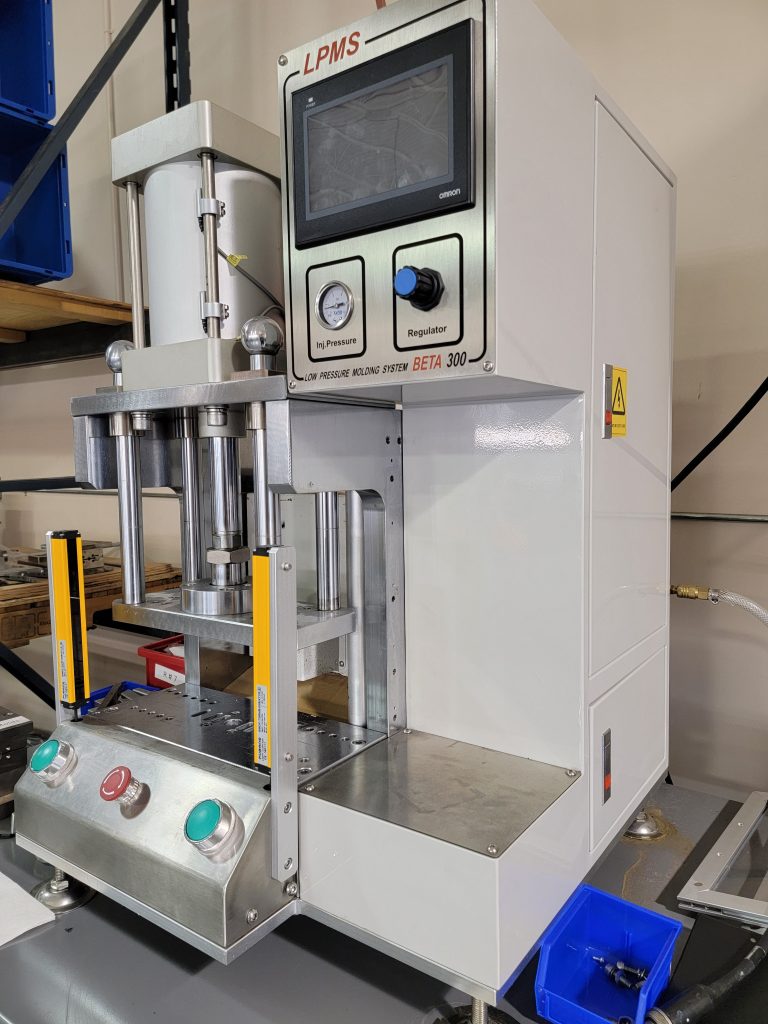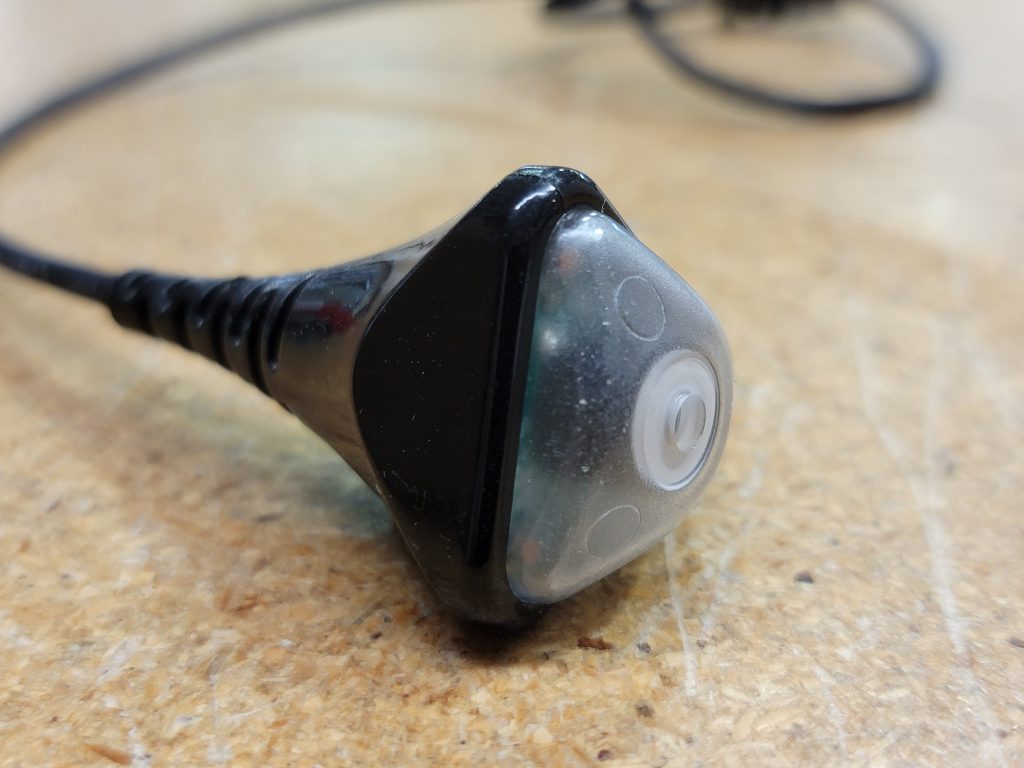One of the best methods custom cable manufacturers have for effectively protecting the many components composing cable assemblies is a process known as low-pressure molding. With investments in state-of-the-art machines like our Low Pressure Molding Machine, the LPMS Beta 300, Meridian is able to produce incredibly strong, custom assemblies that are perfectly suited for their intended applications.
In today’s LiveWire deep dive, we’ll explore the many benefits of low pressure molding in cable and wire assemblies and how you can best utilize this method in your next production run.
What is Low-Pressure Molding?
If you’re sitting at your computer and reading this, right now your PC is using cable assemblies, connectors, terminals, and more to make that action possible. Across from you may be a printer, your cell phone sitting next to you, and outside is your car which may have got you to work this morning. All of these machines require complex cable assembly and wire harness engineering in order to function.
Yet, each contains parts that can easily fail if they aren’t engineered with additional layers of protection. Abrasion, bending, water, heat, cold—all of these variables require a keen design that mitigates against the forces of nature constantly bombarding your electronics’ sensitive components. Enter low-pressure molding.
Low-pressure molding, also referred to as “hot-melt molding”, is a method of manufacturing that takes the best of two processes in injection molding and casting. Low-pressure molding is ideal for use in sealing custom cable assemblies, while also serving to provide strain relief. By completely surrounding the components, low-pressure molding provides a reliable protection against external forces.
A Closer Look at the Low-Pressure Molding Process
Whenever you use injection molding, you’re typically using a type of thermoplastic (basically a material that gets soft when heated and hard when cooled) that gets heated up and injected into a mold at-pressure. This process is great for volume manufacturing and often doesn’t actually create a permanent bond with the underlying material.
Conversely, low pressure molding does create a permanent bond with the components it’s covering. Let’s look at the process:
- Using a hot-melt such as polyamide adhesive, we heat these granular pieces to somewhere between 350 degrees and 460 degrees Fahrenheit. The polyamide adhesive doesn’t really melt per-se, but rather just gets soft. When it’s at the right softness and viscosity, it’s ready for injection molding. These pellets are softened within an integrated melt tank directly on our LPMS Beta 300.
- Whatever wire assembly component is getting sealed gets placed into custom molds to be covered by the adhesives. Inside the Beta 300, gears are used to make a pressurized force through which the softened material goes through a heated hose and finally into the injection heads themselves. The Beta 300 utilizes a horizontal-injection system with a single-injection gun for maximum efficiency. Once the material is injected, the component becomes completely encased with a physical bonding of materials.
- The actual pressure used in the injection molding for these types of adhesives is far lower than your typical injection molding process. Hitting on the high side of 500 psi is much lower than the 15,000 psi for the upper reaches of injection molding. This gentler approach is ideal for extra-sensitive components such as with medical device technology. As well, the Beta 300 has two thermal zones which means our skilled operators have more control than ever before for precision melting temperatures.
- The materials will then cool down quickly, typically in under a minute. The component is then 100% ready to remove and use as desired.
And there you have it, the low pressure molding process in a nutshell. With the capabilities our LPMS Beta 300 provides, we’re able to create the perfect set up for even the most customized wire assemblies our clients need developed. This capability and our expertise is what’s helped set our services apart in custom cable manufacturing.
Benefits of Using Low Pressure Molding in Wire Assemblies
When utilizing a hot-melt polyamide adhesive, you’re starting with a compound that’s solid at room temperature. These are safely developed using renewable resources. Because any scrap material is reusable, these are also incredibly sustainable.
These types of adhesive are also very safe, without toxic gasses being released into the atmosphere during a manufacturing run. Being both non-toxic, as well as able to be recycled, makes these materials a great choice for green initiatives, such as LEED electrical designs in sustainable buildings. Polyamides also offer greater levels of protection and can be used as an insulating material.
Because they form an actual bond with the underlying components, the seal is highly resistant to water, dust, chemicals, and other environmental factors. This makes them ideal for extreme hot and cold environments, or where abrasion resistance is required. They even work well when they need to be printed on.
Finally, while the initial material may cost a bit more than injection molding, there are many cost-savings measures along the manufacturing process that make this a very economical method. For example, molds used in injection molding have to be super heavy duty steel which are quite expensive. With low pressure molding, we can typically utilize lower-priced aluminum molds, or even 3D printed materials which is great for prototyping different iterations. The aluminum also removes heat faster after the process is complete which lowers the overall cycle time. Because heat distortion is also mitigated, you have less loss which means more efficient production runs.
Inside the Design Studio for Low Pressure Molding Applications
You might think that the molds, connectors, terminations, and other tools we use every day are easily-available. But the fact is, most of these are custom designs that we tweak to each individual product. In fact, after decades as leaders in custom cable manufacturing, we have amassed a tooling inventory of well over 5,000 different components at our disposal for a given project.
Molds are one such tool in our arsenal that require careful design consideration, testing, and even prototyping to make sure we have everything right. We work with some of the best mold manufacturers in the world in order to create the products that help our men and women in the military, power high-tech telecommunications equipment, and a hundred and one other applications. We also have the ability to 3D print mold inserts for low-volume production runs or when the final design needs to be tweaked by successive iterations of tooling.
The low pressure molding sets are made so that the components can be removed efficiently after manufacture, without damaging any of the sensitive components. This requires very advanced engineering that allows the perfect amount of air and heat out, while still being able to be processed quickly. Components are centered within each mold and injected to be set.
Areas Where Low Pressure Molding Can Be Advantageous
Whenever a fast cycle time is required, and we are seeking to improve the reliability of the data, signal, or power being transmitted within the system, low pressure molding is a fantastic addition to the overall design. That’s not to say, however, that all problems are solved with low pressure molding, but within specific applications our engineers utilize this process to bring about the most advantageous results for our client’s projects.
When looking at connectors, the low pressure molding materials can act as a great overmold for the connector, as well as the cable assembly. This provides advanced protection against water intrusion and other environmental factors. As well, the strain relief provided is another huge benefit. Overall, even the aesthetics of the design are improved with a streamlined component. Low pressure molding is even more reliable than heat shrinking tubing since a physical bond is made.
Other sensitive applications are able to employ low pressure molding to create a very effective overmold, without harming the underlying components. We often use this method when circuit boards or fragile electronic components need to be overmolded. This can also save money by not having to use all of the support elements such as housings and junction boxes, since the overmold performs this function.
In wire harnesses, low pressure molding can be utilized with various components such as bushings. These low-pressure molded bushings will both hold the cable assemblies in place but also provide necessary strain relief. Low pressure molding bushings are able to provide a better grip on the components that need to stay in place and can be put together relatively quickly to make even the most complicated wire harnesses a better-managed system. That’s because these types of bushings are actually manufactured in place rather than having to be put on to an existing harness. The connections become waterproof powerhouses, ready to provide protection for the cables beneath.
Ready to See How Low Pressure Molding Can Benefit Your Project?
At Meridian, we specialize in the design and production of some of the most customized cable assemblies available today. To do this requires our team to have the best tools and talent available. With the capability of machines like the LPMS Beta 300 making low pressure molding a resource available when needed, our designers can create the best product possible to meet the needs of the project. Contact our team now to go over your project’s specs and to see if low pressure molding might be a useful addition to your overall design.

